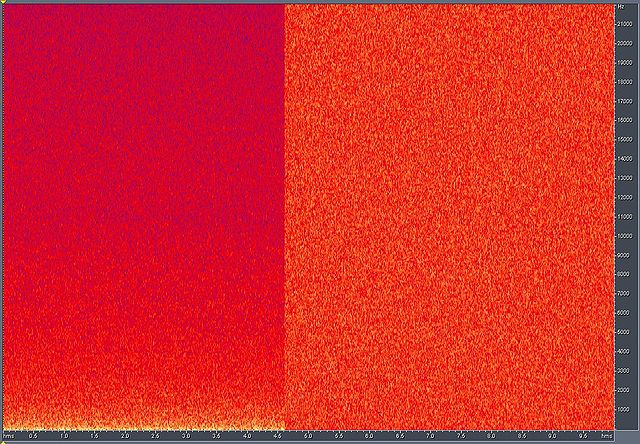In signal processing, white noise is a random signal having equal intensity at different frequencies, giving it a constant power spectral density. The term is used with this or similar meanings in many scientific and technical disciplines, including physics, acoustical engineering, telecommunications, and statistical forecasting. White noise refers to a statistical model for signals and signal sources, rather than to any specific signal. White noise draws its name from white light, although light that appears white generally does not have a flat power spectral density over the visible band.
Spectrogram of pink noise (left) and white noise (right), shown with linear frequency axis (vertical) versus time axis (horizontal).
Additive white Gaussian noise
Additive white Gaussian noise (AWGN) is a basic noise model used in information theory to mimic the effect of many random processes that occur in nature. The modifiers denote specific characteristics:Additive because it is added to any noise that might be intrinsic to the information system.
White refers to the idea that it has uniform power spectral density across the frequency band for the information system. It is an analogy to the color white which may be realized by uniform emissions at all frequencies in the visible spectrum.
Gaussian because it has a normal distribution in the time domain with an average time domain value of zero.
Zero crossings of a noisy cosine
AWGN contributions in the phasor domain



